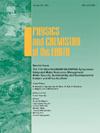探索非线性混合优化算法在地震反演中的应用:比较分析
IF 3
3区 地球科学
Q2 GEOSCIENCES, MULTIDISCIPLINARY
引用次数: 0
摘要
本研究将各种局部和全局优化技术整合在一起,利用叠后地震数据估算地下属性,并定性和定量比较其功效。具体而言,将基于梯度的局部优化方法准牛顿法(QNM)与模拟退火(SA)、遗传算法(GA)和粒子群优化(PSO)等全局技术相结合。这些都是地球物理学中成熟的方法。本研究比较了三种全局优化方法(SA、GA 和 PSO)及其混合变体,以及用于估算地下声阻抗的 QNM。目的是评估求解精度和收敛效率之间的权衡,深入了解每种方法的优缺点。目的是指导地震反演选择最有效的优化技术,同时兼顾质量和计算性能。合成地震数据集和真实地震数据集都用于验证所提出的方法,证明了该方法在各种地质情况下的稳健性能。与单一全局反演方法的对比分析表明,混合优化方法具有更高的准确性和可靠性,是地下表征的多功能工具。结果表明,虽然混合 PSO 方法与单一 PSO 相比没有显著改进,但却延长了收敛时间。另一方面,SA 和 GA 表现出色,但它们的混合版本以更长的收敛时间为代价,大大提高了解决方案的质量。在所有方法中,SA 能最快收敛到全局解,其次是 GA 和 PSO。与混合 PSO 和 GA 相比,混合 SA 脱颖而出,提供了更优越的分辨率和更快的收敛速度。本文章由计算机程序翻译,如有差异,请以英文原文为准。
Exploring the utility of nonlinear hybrid optimization algorithms in seismic inversion: A comparative analysis
The present study integrates various local and global optimization techniques together to estimate subsurface properties from post-stack seismic data and compare their efficacy qualitatively and quantitatively. Specifically, a local gradient-based optimization method, the quasi-newton method (QNM), is combined with global techniques such as simulated annealing (SA), genetic algorithms (GA), and particle swarm optimization (PSO). These are well-established methods in geophysics. The research compares three global optimization methods (SA, GA, and PSO), their hybrid variants, and QNM for estimating subsurface acoustic impedance. The goal is to assess the trade-offs between solution accuracy and convergence efficiency, offering insights into the strengths and weaknesses of each approach. The objective is to guide the selection of the most effective optimization technique for seismic inversion, balancing quality and computational performance. Both synthetic and real seismic datasets are used to validate the proposed methodology, demonstrating its robust performance across various geological scenarios. Comparative analyses with single global inversion approaches reveal that hybrid optimization methods offer greater accuracy and reliability, positioning them as versatile tools for subsurface characterization. The results indicate that while the hybrid PSO method does not provide significant improvements over single PSO, it extends the convergence time. On the other hand, SA and GA perform adequately, but their hybrid versions considerably enhance solution quality at the cost of longer convergence times. Among the methods, SA shows the fastest convergence to the global solution, followed by GA and PSO. Hybrid SA stands out, delivering superior resolution and faster convergence compared to hybrid PSO and GA.
求助全文
通过发布文献求助,成功后即可免费获取论文全文。
去求助
来源期刊

Physics and Chemistry of the Earth
地学-地球科学综合
CiteScore
5.40
自引率
2.70%
发文量
176
审稿时长
31.6 weeks
期刊介绍:
Physics and Chemistry of the Earth is an international interdisciplinary journal for the rapid publication of collections of refereed communications in separate thematic issues, either stemming from scientific meetings, or, especially compiled for the occasion. There is no restriction on the length of articles published in the journal. Physics and Chemistry of the Earth incorporates the separate Parts A, B and C which existed until the end of 2001.
Please note: the Editors are unable to consider submissions that are not invited or linked to a thematic issue. Please do not submit unsolicited papers.
The journal covers the following subject areas:
-Solid Earth and Geodesy:
(geology, geochemistry, tectonophysics, seismology, volcanology, palaeomagnetism and rock magnetism, electromagnetism and potential fields, marine and environmental geosciences as well as geodesy).
-Hydrology, Oceans and Atmosphere:
(hydrology and water resources research, engineering and management, oceanography and oceanic chemistry, shelf, sea, lake and river sciences, meteorology and atmospheric sciences incl. chemistry as well as climatology and glaciology).
-Solar-Terrestrial and Planetary Science:
(solar, heliospheric and solar-planetary sciences, geology, geophysics and atmospheric sciences of planets, satellites and small bodies as well as cosmochemistry and exobiology).
 求助内容:
求助内容: 应助结果提醒方式:
应助结果提醒方式:


